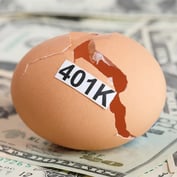(Bloomberg) — The limited number of Americans filing applications for unemployment benefits last week signals the labor market remains resilient even as the economy cools.
Jobless claims rose by 1,000 to 291,000 in the seven days ended March 14, a Labor Department report showed Thursday in Washington. Readings lower than 300,000 are consistent with strong hiring, according to economists such as Jim O’Sullivan. The figures were for the week the government also surveys employers to calculate the monthly payroll data.
“There’s clear progress in the labor market,” said O’Sullivan, chief U.S. economist at High Frequency Economics in Valhalla, New York. He’s the top forecaster of jobless applications in the past two years, according to data compiled by Bloomberg. “Employment growth is strong enough for consumer spending to continue to grow solidly.”
Other reports showed Americans’ views on the economic outlook dimmed in March from a four-year high, manufacturing in the Philadelphia region grew at a relatively slow pace and the index of leading indicators signaled a steady, if unspectacular, rate of expansion. The reports underscore the view of Federal Reserve policy makers, who reduced their forecasts for economic growth and the pace at which they’ll raise interest rates.
Stocks dropped, after rallying Wednesday on the Fed’s policy statement, as a decline in shares of energy companies offset gains in technology and health care. The Standard & Poor’s 500 Index fell 0.5 percent to 2,088.06 at 11:40 a.m. in New York.
Consumers’ outlooks
Soaring home-heating bills following February’s frigid weather and meager wage gains are probably among reasons consumers are feeling more glum about the future.
The Bloomberg Consumer Comfort Index’s monthly economic expectations gauge fell to a three-month low of 51.5 in March from a reading of 54 the prior month that was the strongest since January 2011. In contrast, the weekly sentiment measure improved to a one-month high of 44.2 in the period ended March 15 from 43.3.
“Despite solid employment numbers, wages are stagnant, and recent reports show retail sales, manufacturing and housing starts all struggled in February,” Gary Langer, president of Langer Research Associates LLC in New York, which produces the data for Bloomberg, said in a statement.
The Labor Department’s claims figures showed the four-week moving average, a less volatile measure than the weekly numbers, increased to 304,750 last week, from 302,500. The surge over 300,000 in prior weeks was probably caused by temporary dismissals related to the harsh weather.
Survey results
Economists’ estimates in the Bloomberg survey ranged from claims of 275,000 to 310,000. The Labor Department revised the previous week’s figure to 290,000 from an initially reported 289,000.
The government surveys employers for the pay period that includes the 12th of the month to calculate the monthly payroll data. Initial jobless claims reflect weekly firings and a sustained low level of applications has typically coincided with faster job gains. That’s why economists focus on claims for the survey week to help them project the month’s employment count.








 March 19, 2015 at 10:20 AM
March 19, 2015 at 10:20 AM










